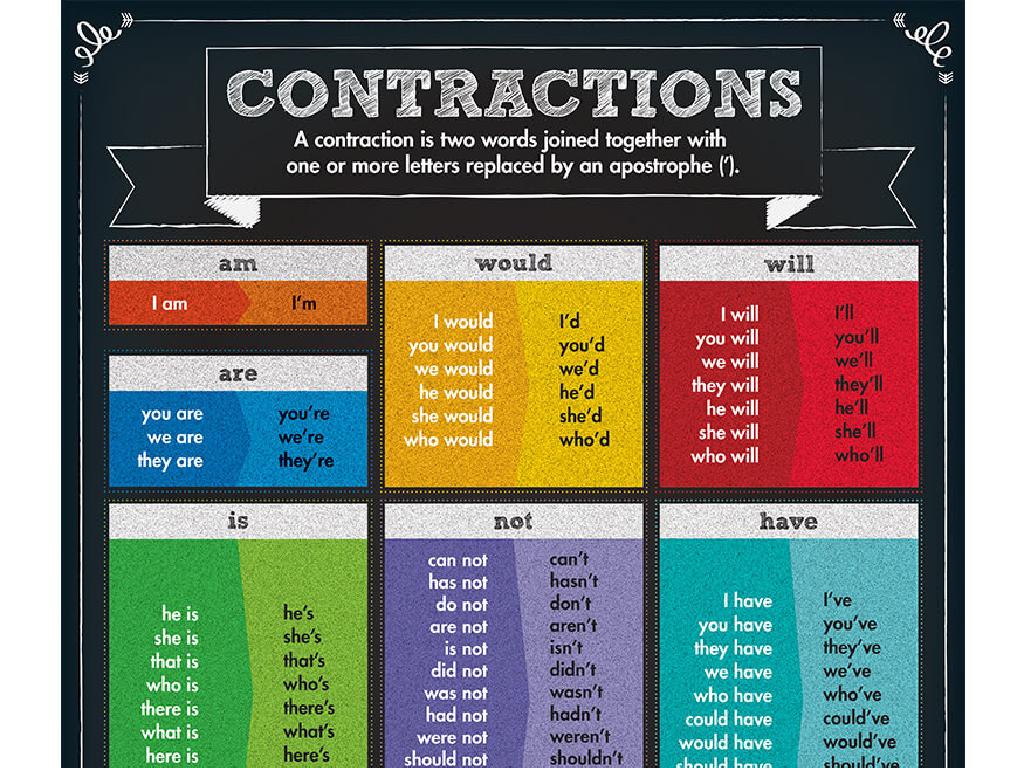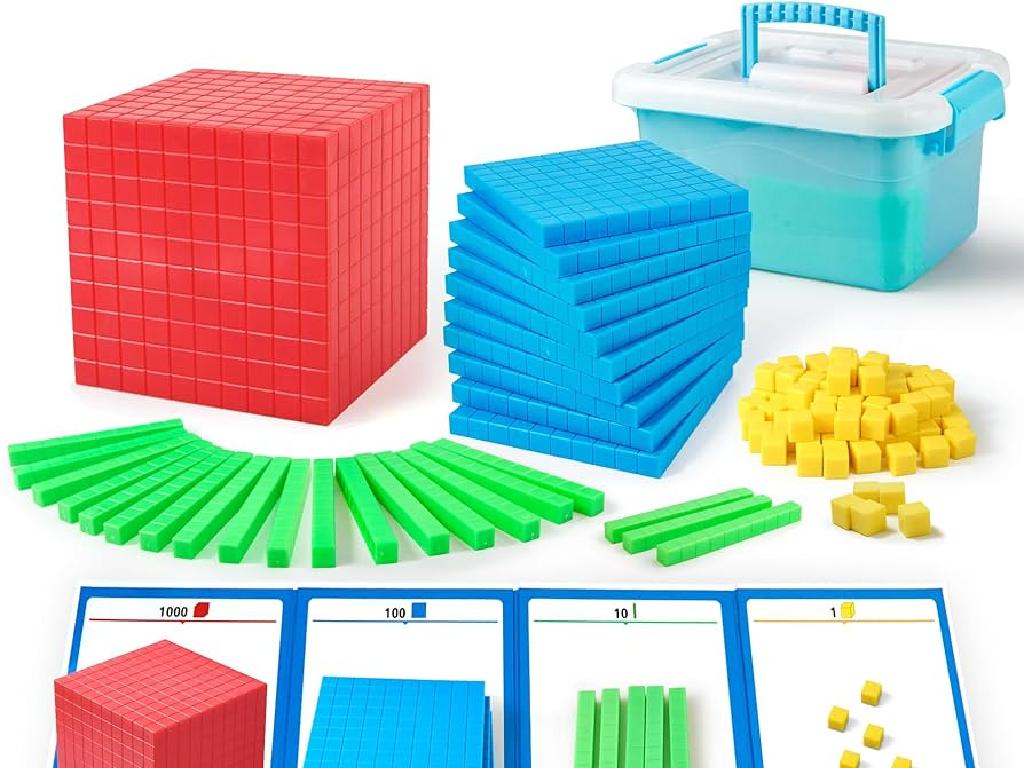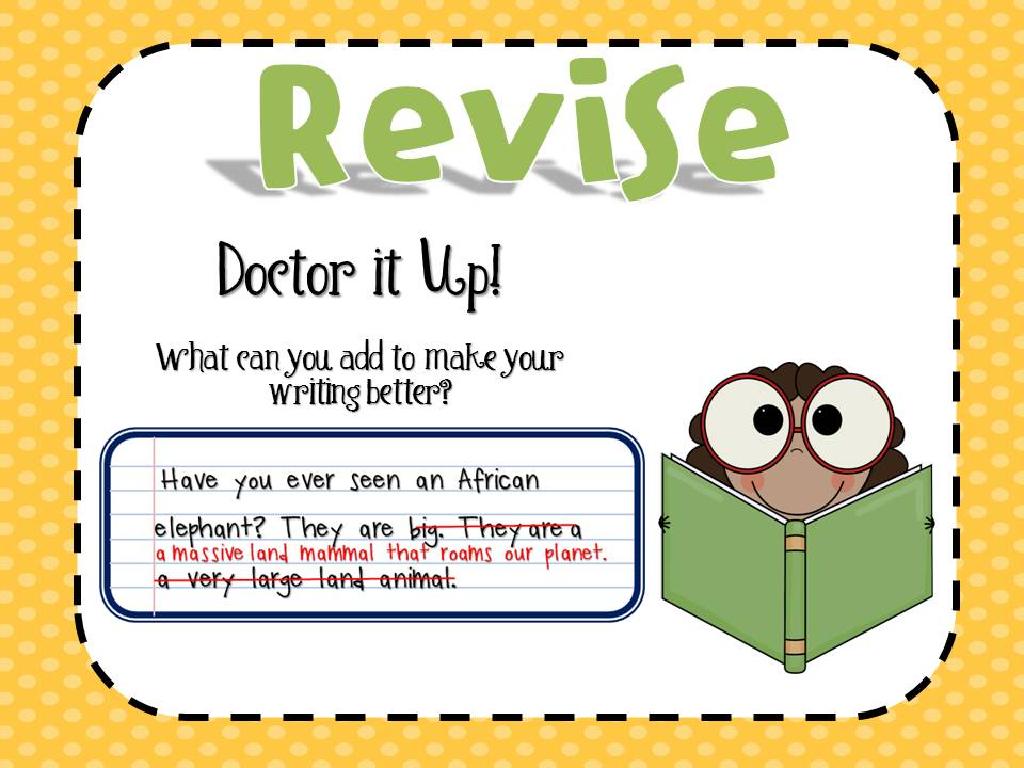Form The Singular Or Plural Possessive
Subject: Language arts
Grade: Third grade
Topic: Nouns
Please LOG IN to download the presentation. Access is available to registered users only.
View More Content
Nouns and Possession
– Welcome to today’s Language Arts class!
– What are nouns? Let’s find out!
– Nouns are people, places, or things, like ‘dog’, ‘school’, or ‘ball’.
– Nouns can own things too!
– Possession means something belongs to someone or something.
– Let’s learn about singular and plural possessives
– Singular possessive: ‘dog’s ball’. Plural possessive: ‘dogs’ park’.
|
Begin the class with a warm welcome and introduce the topic of nouns and possession in a fun and engaging way. Explain that nouns are the names of people, places, things, or ideas, and provide relatable examples that third graders can easily understand. Introduce the concept of possession by explaining that just like people, nouns can own or have things too. Use simple examples to illustrate singular possessive (one owner) and plural possessive (more than one owner) forms. Encourage students to think of their own examples and prepare them for activities where they will practice forming possessives.
Understanding Possession in Nouns
– What does possession mean?
– Possession means something belongs to someone or something.
– Examples of everyday possession
– For instance, ‘Sarah’s doll’ means the doll belongs to Sarah.
– ‘Having’ vs ‘Belonging to’
– ‘Having’ is just holding or using something. ‘Belonging to’ means it’s yours.
– Practice with possessive nouns
|
This slide introduces the concept of possession in the context of nouns. Start by defining possession in a way that’s relatable to third graders, such as explaining that when they have a toy, it’s theirs, and we show this by using possessive nouns. Use tangible examples like a student’s backpack or a pet’s toy to illustrate possession. Clarify the difference between ‘having’ something temporarily and something ‘belonging to’ someone as a more permanent state. This distinction helps set the stage for understanding singular and plural possessive forms. Include an activity where students can practice turning phrases like ‘the book of the library’ into ‘the library’s book’ to apply what they’ve learned.
Forming Singular Possessive Nouns
– Add ‘s to make singular possessive
– Show ownership by adding ‘s to a noun
– Examples: ‘dog’s leash’, ‘teacher’s book’
– The leash belongs to the dog
– Examples: ‘mom’s car’
– The book belongs to the teacher and the car belongs to mom
– Practice saying possessive nouns
– Repeat after me: dog’s, teacher’s, mom’s
|
This slide introduces the concept of singular possessive nouns to the students. Start by explaining that when we want to show that one thing belongs to someone or something, we add ‘s to the end of their name. For example, if a leash belongs to a dog, we say it is the ‘dog’s leash.’ Provide clear examples on the board and have the students repeat them to practice pronunciation. Emphasize the importance of the apostrophe before the ‘s’ and ensure students understand that it indicates possession. During the next class, have a practice session where students form singular possessive nouns from given nouns and use them in sentences.
Forming Plural Possessive Nouns
– How to make nouns show ownership
– Add ‘s to the plural form not ending in s
– When to add just an apostrophe
– Add only an apostrophe to plural nouns ending in s
– When to add ‘s
– For words like ‘children’, add ‘children’s’
– Examples: ‘dogs’ leashes’, ‘teachers’ lounge’
– ‘dogs’ leashes’ means leashes for many dogs, ‘teachers’ lounge’ means a lounge for many teachers
|
This slide introduces the concept of plural possessive nouns to third-grade students. Start by explaining that possessive nouns show ownership or belonging. For most plural nouns that end with ‘s’, we simply add an apostrophe at the end to make them possessive (e.g., dogs’). However, for plural nouns that do not end in ‘s’, like ‘children’ or ‘men’, we add ‘s to form the possessive (e.g., children’s). Use clear examples to illustrate the difference. Encourage students to think of other plural nouns and practice forming the possessive case. Provide additional examples and practice sentences to reinforce the concept.
Let’s Practice Possessives!
– Practice forming possessives
– Turn ‘the dog’s ball’ and ‘the dogs’ park’ into possessives
– Correct mistakes together
– We’ll fix errors as a class and learn why they’re wrong
– Explain your answers
– Tell us why ‘the cat’s whiskers’ is correct
– Interactive group activity
|
This slide is for an interactive class activity focused on forming singular and plural possessive nouns. Start by explaining the concept of possessive nouns and how they show ownership. Use examples like ‘the girl’s book’ for singular possessive and ‘the girls’ books’ for plural possessive. During the activity, correct common mistakes as they arise and discuss why the corrections are necessary. Encourage students to articulate their thought process when forming possessives. This will help them understand the rules better and apply them correctly. Have a variety of examples ready for students to practice with and ensure that everyone has a chance to participate.
Your Turn: Crafting Possessive Nouns!
– Write sentences with possessive nouns
– Describe your pet’s house creatively
– Imagine and illustrate your pet’s special place
– Use singular and plural possessives
– Remember, add ‘s for singular, s’ for plural
– Check your possessive forms
– Double-check apostrophes and noun forms
|
This slide is an interactive activity designed to engage third-grade students in applying their knowledge of singular and plural possessive nouns. Encourage students to think creatively and write descriptive sentences about their pet’s house, using possessive nouns to show ownership. Remind them of the rules for forming possessive nouns: typically adding ‘s for singular nouns (e.g., the dog’s bone) and adding an apostrophe after the s for plural nouns (e.g., the dogs’ house). After writing, students should review their sentences to ensure they have used the correct possessive form. As a teacher, prepare to provide examples and guide students through the activity, offering support and correction where necessary. This exercise not only reinforces grammatical skills but also fosters imagination and descriptive writing.
Class Activity: Possessive Noun Hunt
– Learn rules of Possessive Noun Hunt
– Search for items, write possessive forms
– Find a pencil. Whose is it? Write: ‘the pencil’s eraser’
– Engage physically in learning
– Apply concept with real objects
– Use classroom objects to practice making them possessive
|
This activity is designed to help students understand and form singular and plural possessive nouns by interacting with their environment. Begin by explaining the rules: students must look for items around the classroom and then write down the possessive form of the noun that owns the item. For example, if a student finds a pencil, they would write ‘the pencil’s eraser’ to show that the eraser belongs to the pencil. This activity allows students to move around, which can aid in memory retention and make the learning process more enjoyable. It also provides a practical application of the concept, reinforcing their understanding. For the activity, consider having different stations with items belonging to the class, a student, or a teacher, and ensure students write both singular and plural possessives correctly.
Review and Reflect: Possessive Nouns
– Review singular possessive nouns
– How to add ‘s to show ownership for one
– Discuss plural possessive nouns
– Adding ‘ or ‘s to plurals, depending on the ending
– Share what we’ve learned
– Let’s hear about your favorite examples
– Q&A session with feedback
– Time to clear up any confusion!
|
This slide aims to consolidate the students’ understanding of possessive nouns. Start by revisiting the rules for creating singular possessive nouns (adding ‘s to a singular noun) and plural possessive nouns (adding an apostrophe after the s for nouns ending in s, or ‘s if the plural noun does not end in s). Encourage students to share examples they’ve come up with during the lesson, which helps reinforce their learning and allows them to learn from each other. Conclude with a Q&A session, providing individual feedback to ensure all students are clear on the concept. This interactive review will help solidify their grasp on possessive nouns and prepare them for future writing tasks.
Homework: Possessive Nouns Hunt
– Reinforce today’s possessive nouns lesson
– Find possessive nouns in a favorite book
– Look for nouns showing ownership, like ‘dog’s leash’ or ‘teachers’ lounge’
– Note examples of singular and plural possessives
– Share your findings in our next class
– Be ready to explain how you knew they were possessive
|
This homework assignment is designed to help students apply the concept of singular and plural possessive nouns in a practical context. By searching for examples in a book they enjoy, students will be more engaged and likely to remember the lesson. Remind them to look for apostrophes that indicate possession and to distinguish between singular possessives (e.g., ‘the cat’s toy’) and plural possessives (e.g., ‘the cats’ toys’). In the next class, create a collaborative environment where students can share and discuss their examples, reinforcing their understanding of possessive nouns.






